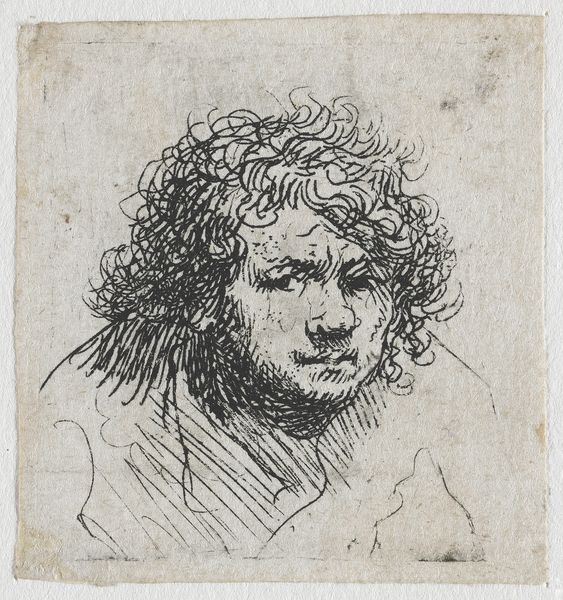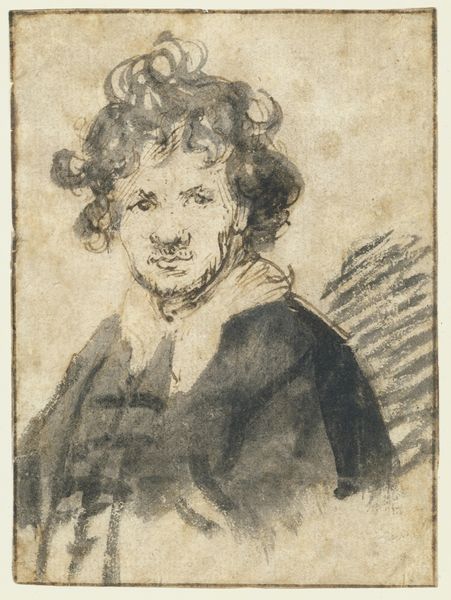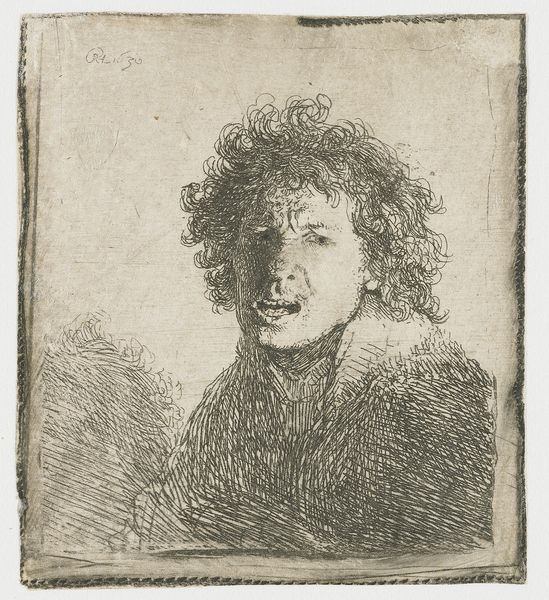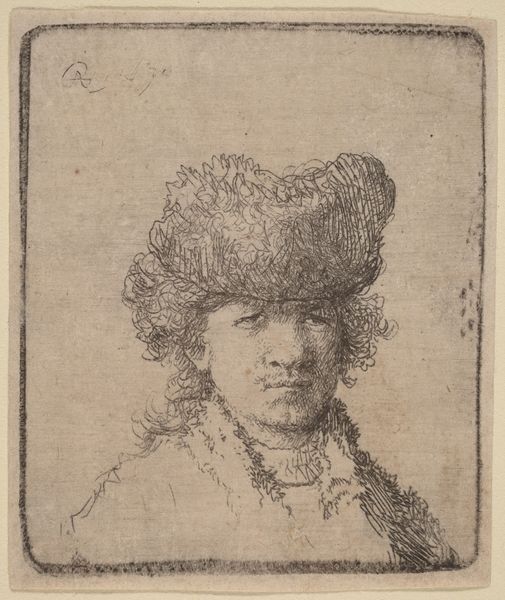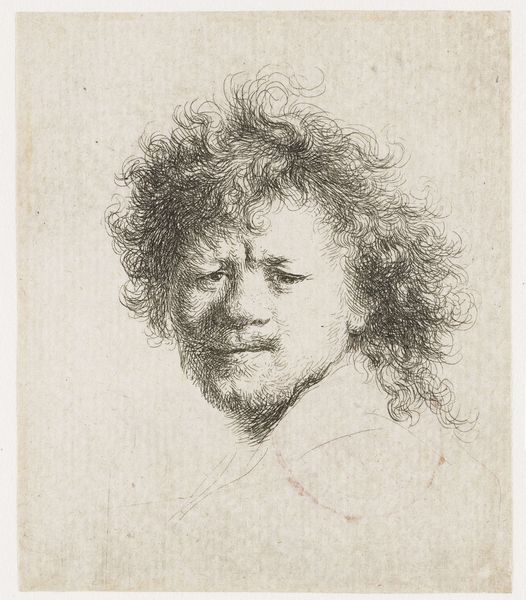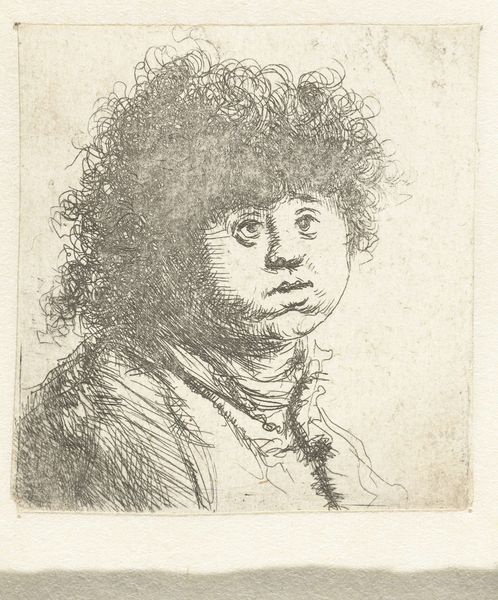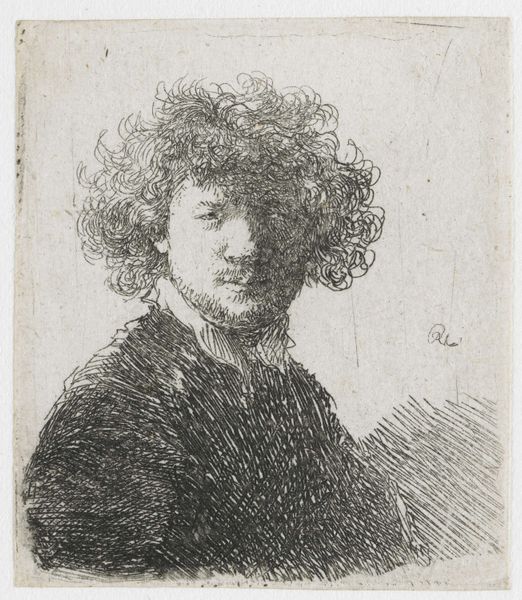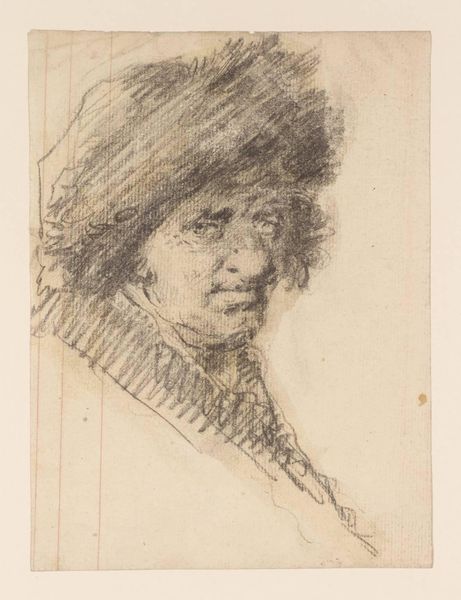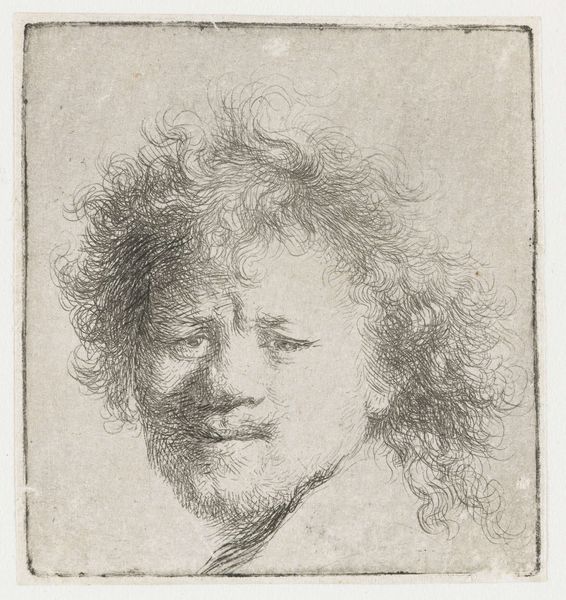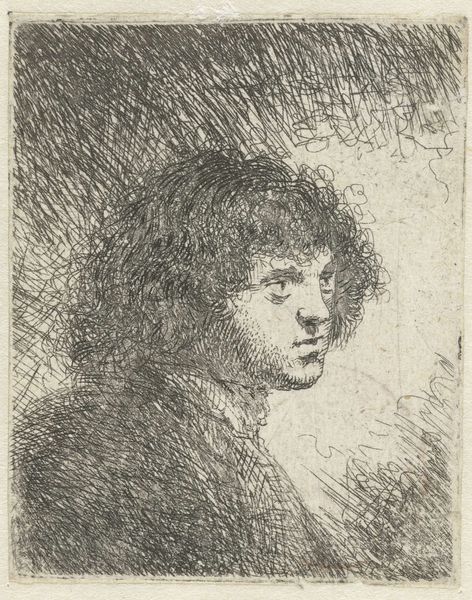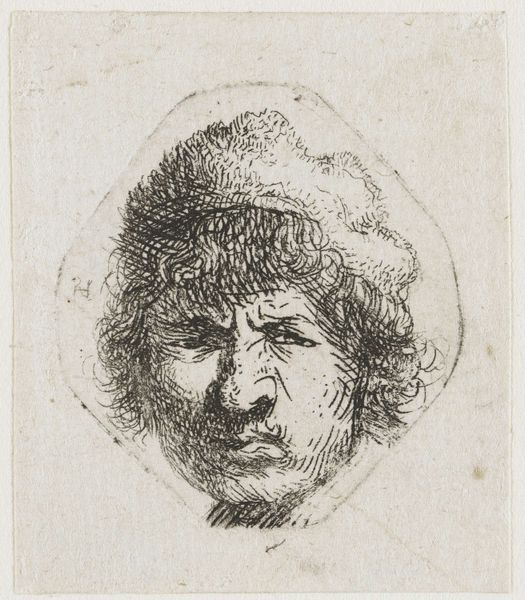
print, etching
#
portrait
#
self-portrait
#
baroque
#
dutch-golden-age
# print
#
etching
#
chiaroscuro
#
realism
Copyright: Public domain
Rembrandt van Rijn created this self-portrait using etching, a printmaking technique with a long history. The process involves coating a metal plate with a waxy, acid-resistant substance, and then using a needle to draw an image, exposing the metal beneath. The plate is then immersed in acid, which bites into the exposed lines. The depth of the lines corresponds to the time spent in the acid bath, allowing for subtle gradations of tone. When printed, the etched lines hold ink, creating the image on paper. Look closely at the density and direction of the lines, they define Rembrandt’s features and swirling hair, conveying a sense of depth and texture. Etching allowed artists to produce multiple copies of their work, making art more accessible to a wider audience, and feeding the burgeoning art market. The technique requires skilled labor, both in the artist's hand and in the printing process, reflective of the increasing specialization of labor in the 17th century. Considering the material and the making enriches our understanding of Rembrandt's self-portrait, highlighting the intersection of artistic expression, technical skill, and economic factors.
Comments
No comments
Be the first to comment and join the conversation on the ultimate creative platform.
